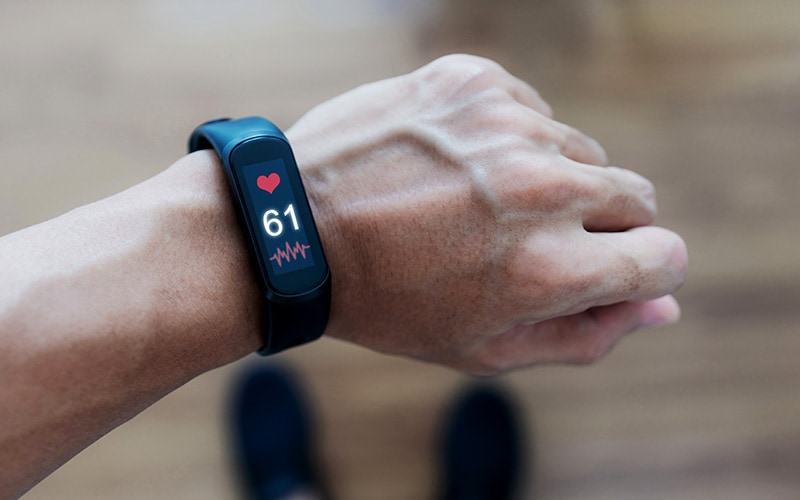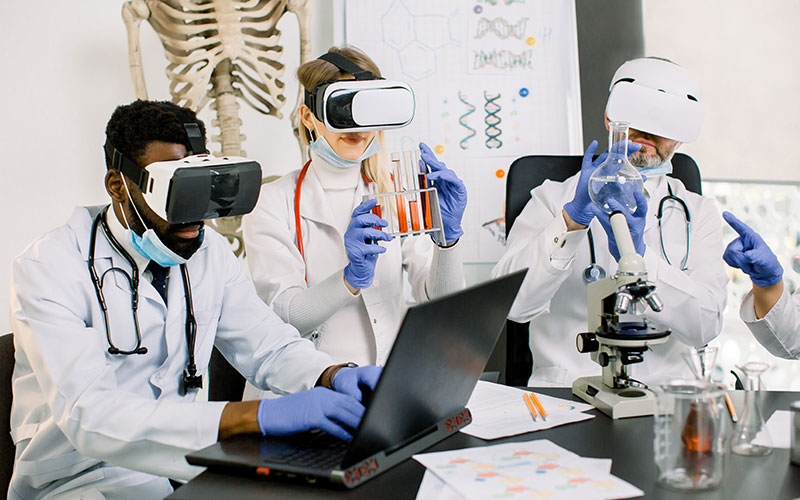Better reimbursement rates by payers and more adoption by caregivers and health plans fueled a significant acceleration in telehealth. Among Americans with private insurance, telemedicine visits increased at a 52% compound annual growth rate from 2005 to 2014 and then at a 261% CAGR from 2015 to 2017, according to the Journal of the American Medical Association.1 Millennial and Generation Z health care consumers consistently demand that doctors and health care institutions provide options that are more convenient. This includes telehealth, virtual care and digital interactions.2
Then the global spread of COVID-19 pushed telehealth into overdrive. Teladoc Health, the New York-based telehealth giant, doubled the number of virtual visits it handled in the first quarter of 2020.3 CVS Health said virtual visits through its in-store clinic operations climbed 600% in the quarter.4 Telehealth provider Amwell raised $200 million in expansion capital and began preparing for an initial public offering.5
While the pandemic persists, telehealth will be a vital tool for medical professionals to deliver care while minimizing wider spread of COVID-19. This extra usage also makes telehealth a richer experience.
With any new instrument, the more you practice the better you get. Individual caregivers grow more proficient the more they use telehealth tools. Health care institutions gain more data, more uniform data and more insight into how telehealth can be used across a continuity of care. Patients gain a new way to connect and stay in contact with caregivers.
This coronavirus-fueled enrichment creates an opportunity to shift telehealth from a convenient option at the edge of health care, to the center of a digital personal health hub. Combining telehealth and an integrated digital approach can create a patient-centered system that connects outward through the health care ecosystem.
A digital health hub approach to care has the potential to address a range of chronic health care industry problems: expanding access to care, improving continuity of care, reducing cost and easing physician burnout.
Tech-driven, patient-centered care can drive integration and effective, lasting adoption
Figure 1. Telehealth visits were on the rise ahead of the spread of COVID-19
Source: Journal of the American Medical Association
Telehealth grows more personal
Doctors have consulted via telecommunications for decades prior to the internet and the smartphone.6 As technology has advanced, practitioners have also expanded the range of care and consultation they can provide. Beyond fielding queries of the “Is this a rash?” and “Do I have flu?” variety, telehealth has proven effective at managing chronic issues ranging from mental health to vascular disease.7 This more personal form of telemedicine creates an opportunity for more personalized care. Instead of using technology to connect with a doctor, personalized telehealth connects you with your doctor.
This approach shifts the patient and telemedicine to the center of the health care experience. In a patient-centered health hub, providers can create secure networks that share information passively and actively. Secure 5G networks will help doctors keep confidential information and sensitive images in proper systems. Edge devices, wearables and remote sensors can automate wellness programs, help monitor chronic conditions and show promise to give early alerts to illness. Further, augmented and virtual reality systems can create richer experiences and enable patients to be more involved in managing their own conditions.
Beyond the patient, patient-centered digital care benefits other stakeholders in health care. Networks can deliver care more efficiently, with automated documentation flowing from telehealth. Doctors and caregivers can work toward more manageable caseloads, and allow digital systems to reduce the downtime they spend charting and entering records into poorly integrated systems. Over time, the data collected via such hubs can lead to deeper insights to drive better care and reduce costs.
Increased telehealth usage due to COVID-19 will create new advantages. Higher volumes of more uniform data will make for a richer real-world dataset, and improved analyses. Richer data can spread improvements through the ecosystem in the form of:
- Improved usage of telemedicine
- Efficiency and better predictability
- Higher standards of care
- Cost reductions
- Better patient experiences
To build the digital health hub: Digitize, accelerate, integrate and expand
The first step to building an integrated system is to eliminate paper forms and digitize all aspects of the health system.
Digitize
The Dubai Health Authority engaged Infosys to help clear up how its state hospital system deals with foreign treatments. At the time, the system used for this was a “significantly manual effort with significant amounts of paper,” recalls Lax Gopisetty, group practice vice president at Infosys.
The team accomplished that a little bit at a time. In the end, the effort saved significant time.
Digitizing and integrating the data cut application-to-approval for overseas treatments from 21 days to seven days.8
After about 30 months of work, Gopisetty’s team still has more integrations to do.
“This is not a one-shot implementation – it’s a continuous improvement model,” he said. “We worked with their frequency not as an IT vendor but as a partner.”
Accelerate
A digital system allows a team to move fast. In the spring as COVID-19 began to spread, Britain’s National Health Service asked its hiring affiliate, NHS Professionals to staff up for the coming crisis.
Digital systems allow fast team movement

Infosys manages the system for bringing new applicants into the NHS Professionals’ approval pool, which then enables hospitals and clinics to hire the staffers in. Before the crisis, that process took three to five days for staffers already employed by a hospital system or seven days for a person with a reference in one of the health systems. Health care workers new to the system faced one to three months for the application, testing and training process before they could begin work.
To get health care workers hired more quickly, Infosys’ team brought down those first two categories to a 24-hour onboarding process, explained senior consultant Satyabrata Pal.
Integrate
Dollars invested in building out robust, integrated telemedicine systems can show significant returns on investment. In North Carolina, a network of rural counties have united with regional medical school East Carolina University to extend behavioral health care via telemedicine. With a $2 million state budget (used mostly for equipment), the North Carolina program has saved $27 million in avoiding hospital admissions alone.9
Over time, such an integrated system will be able to provide further value via data and analytics that build up in the system. This could drive improved case management and provide data-driven support for wellness initiatives.
Expand
Using a digital health hub can garner further insights by expanding beyond traditional care ecosystems. Researchers at Stanford have teamed with Fitbit and Scripps Research to study if heart rate changes can predict viral illness (such as COVID-19) as early as possible.10 Wearable devices that track heart rate and skin temperature should be able to sense when a body is fighting off an infection. These devices take hundreds of thousands of measurements daily. Researchers led by Stanford School of Medicine genetics chair Michael Snyder aim to develop algorithms to help people know when their body is beginning to fight an infection.
“You might wonder, ‘Are these sniffles allergies, or am I getting sick?’” Snyder said in a university press release. “These algorithms could help people determine if they should stay home in case their body is fighting off an infection.”11
From high use to better use
To advance from heightened use of telehealth to better use of digital health hubs, the hubs must contain improvements for all stakeholders.
Starting with the patient at the center and using telehealth to connect to each aspect of health care will illuminate pathways leading to lasting improvements.
Beyond improvements for the separate stakeholders, an integrated digital health hub has the promise to transform health care systems themselves.
Integrated digital health hubs promise to transform health care systems
A digital health hub that delivers better patient experience and better practitioner experience will get used more, which will in turn create a virtuous cycle of generating better and more useful data.
References
- Trends in Telemedicine Use in a Large Commercially Insured Population, 2005-2017, Michael L. Bennett, Kristin N. Ray, Jeff Souza, et al., Journal of the American Medical Association, Nov. 27, 2018.
- Younger Patients More Likely to Be Dissatisfied With Healthcare, Turn to Nontraditional Health Services , Jaime Rosenberg, American Journal of Managed Care In Focus Blog, Feb. 19, 2019.
- Teladoc Health Inc. Quarterly Report for the period ending March 31, 2020, Jason Gorevic, Mala Murthy, April 29, 2020
- CVS Health First Quarter 2020 Earnings conference call presentation, Larry Merlo, Eva Boratto, May 6, 2020.
- Amwell confidentially files for IPO amid surging demand for remote health care, Christina Farr, Ari Levy, CNBC.com, Jun 8, 2020.
- Telemedicine: A Guide to Assessing Telecommunications in Health Care, M.J. Field, U.S. Institute of Medicine Committee on Evaluating Clinical Applications of Telemedicine, 1996.
- Virtual Vascular Clinic Satisfies Patients , Christopher Cheney, Health Leaders, July 17, 2018.
- Dubai Health Authority Transforms its Patient Experience with Infosys Using Microsoft D365, May 2020, NelsonHall.
- NC-STeP Telepsychiatry Network a Model for Statewide Coverage, David Raths, Healthcare Innovation, Sept. 9, 2019.
- Stanford Medicine using wearable devices’ health data to catch early signs of viral infections, Jackie Drees, Becker’s Health IT, April 14, 2020.
- Stanford Medicine scientists hope to use data from wearable devices to predict illness, including COVID-19, Hanae Armitage, Stanford Medicine News Center, April 14, 2020.






